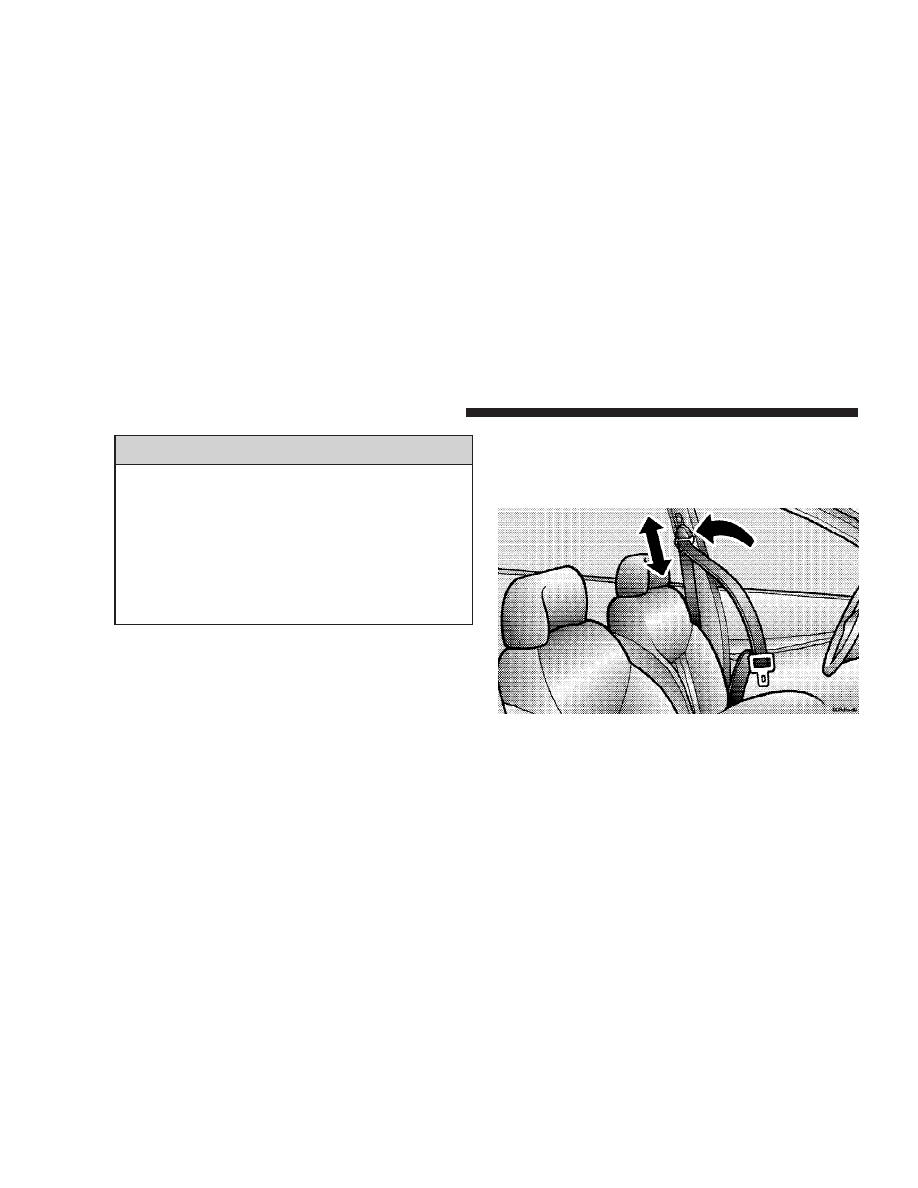Dodge Magnum SRT (2008 year). Manual - part 3

WARNING!
The rear center lap/shoulder belt is equipped with a
lock-out feature to ensure that the rear seatback is in
the fully upright and locked position when occupied.
If the rear seatback is not fully upright and locked
and the rear center lap/shoulder belt can be pulled
out of the retractor, the vehicle should immediately
be taken to your dealer for service. Failure to follow
this warning could result in serious or fatal injury.
Adjustable Upper Shoulder Belt Anchorage
In the driver and front passenger seats, the shoulder belt
can be adjusted upward or downward to position the belt
away from your neck. Push and fully depress the button
above the webbing to release the anchorage, then move it
up or down to the position that fits you best.
NOTE:
When the shoulder belt is adjusted to the full
downward position, it will not be at the bottom of the slot
in the Trim Panel. This is normal and the intended lowest
position.
Adjusting Upper Shoulder Belt
44
THINGS TO KNOW BEFORE STARTING YOUR VEHICLE